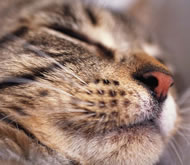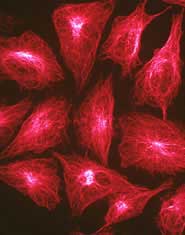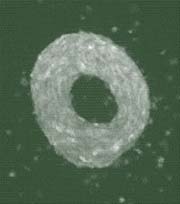Life Sciences and Chemistry
Articles and reports from the Life Sciences and chemistry area deal with applied and basic research into modern biology, chemistry and human medicine.
Valuable information can be found on a range of life sciences fields including bacteriology, biochemistry, bionics, bioinformatics, biophysics, biotechnology, genetics, geobotany, human biology, marine biology, microbiology, molecular biology, cellular biology, zoology, bioinorganic chemistry, microchemistry and environmental chemistry.

Intellect thrives on sleep
Land of nod is a learning experience
Cramming all night might help you to scrape through exams, but it won’t make you clever in the long run. Human and animal experiments are lending new support to a common parental adage: that a good night’s sleep is essential to learning.
“Modern life’s erosion of sleep time could be seriously short-changing our education potential,” warned Robert Stickgold of the Massachusetts Institute of Technology at the meeting of American Associatio

Stop and search
Glowing nanobots map microscopic surfaces.
Unleashing hordes of molecular robots to explore a surface’s terrain can produce maps of microscopic structures and devices with higher resolutions than those produced by conventional microscopes, new research shows.
Each robot has a ’light’ attached to it, allowing its random movements to be tracked around obstacles, through cracks or under overhangs. Adding the paths of hundreds of wandering nanobots together builds up a map of th

UWE scientists find link between wilting plants and impotence
Researchers studying plant behaviour have discovered similarities between the processes preventing plants from wilting and humans from suffering impotence. Data recently published by the University of the West of England shows the same chemical chain of events is involved in both situations – and has led to an understanding of how water loss from plants might be reduced.
This blocking action has parallels with the chemical effect of impotence treatments in humans. Plants lose water through

Bath toys show strength in numbers
Miniature floating craft can be programmed to move and assemble in complex ways.
Harvard chemists are playing with bath toys. Floating bubble-powered craft designed to attract and repel one another, are helping them model the machinations of groups such as foraging ants, nest-building termites or schools of fish 1 .
Group dynamics are not always obvious from individuals’ behaviour, but emerge from their interactions. Computer models can simulate such processe

Fission statement
Alternative yeast joins genome party.
First there was budding yeast ( Saccharomyces cerevisiae ). Partly responsible for scientists’ survival by fermenting their staples beer and bread, they polished off its DNA sequence back in 1997.
Now the minority fungus of lab culture – fission yeast ( Schizosaccharomyces pombe ) – is fighting back. This week S. pombe enters the experimental big leagues, with the announcement of its completed genome 1

Sounding the alarm for infections: EMBL researchers discover rapid-response, interferon-producing cells
Nearly fifty years ago, researchers discovered that when cells in laboratory cultures are infected by a virus, they secrete a substance that protects other cells from infection. In 1957 Alick Issaks and Jean-Jacques Lindenmann traced this effect to a protein called interferon, a molecule now known to play a key role in the immune system. Human and animal cells produce it in a rapid “first wave” response to infections. Since its discovery, scientists have sought to use this natural substance to cure a